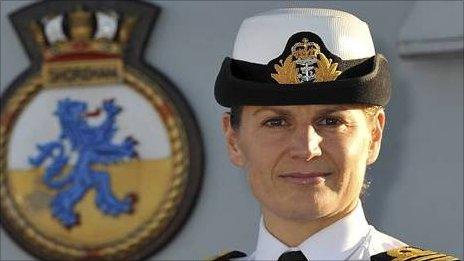'Times have changed' on women troops, but controversy remains
- Published
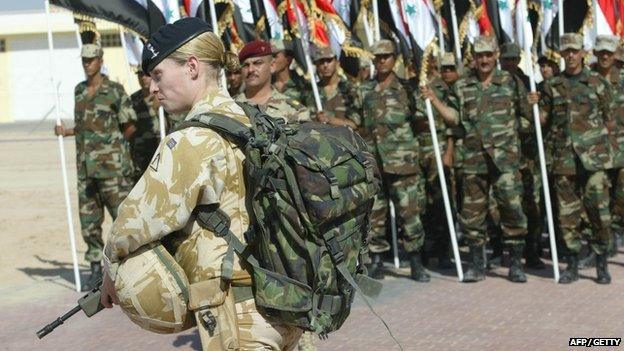
The last review of women in front line roles warned of 'grave consequences'
Several thousand servicewomen have done tours of duty in Iraq, Afghanistan and elsewhere - often on the front lines - and many have successfully combined motherhood and military duty.
There are now more women in the armed forces than at any other time since the end of World War Two and they currently make up 10% of the armed forces in the UK.
A slightly higher proportion serve in the RAF, where they can already fly in combat as fast jet pilots and perform 96% of the available RAF roles.
The Royal Navy also allows women in most roles - with several commanding UK ships - and it recently allowed women to serve on submarines as well, although not in the Royal Marines.
Tiny percentage
Yet previous military reviews have concluded that allowing women into roles where their primary purpose is to "close with and kill the enemy" would not work - and could have a negative impact on morale and unit cohesion in fighting units such as the infantry and Royal Marines.
The last MoD review in 2010 concluded that while women were both "physically and psychologically" capable of the job of close combat, the effects of "gender mixing" on team cohesion were unknown and could have "far-reaching and grave consequences".
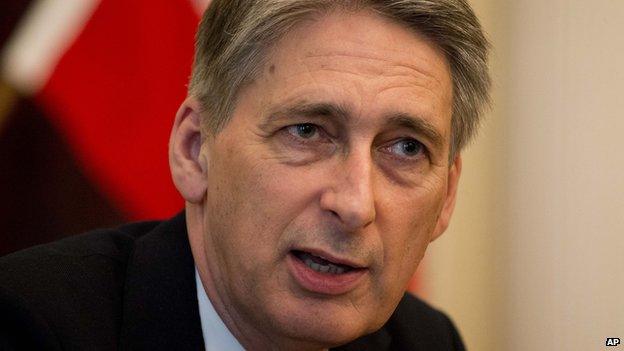
Defence Secretary Philip Hammond said fitness standards would not be lowered
However, times have changed, and other countries such as America recently decided to allow women into front-line combat roles, which has also had an impact on UK defence thinking.
Those countries that already do so, including Canada, Australia, South Africa and Israel, say it has worked - though women still form a tiny percentage of their combat arms, for example just under 3% in Canada.
Today, Defence Secretary Philip Hammond hinted strongly that this time, the correct answer to the question of whether British women should be able to fight on the front line alongside their male colleagues should be yes, though the idea of women in close combat roles in the infantry remains controversial.
Physical challenge
Mr Hammond also made clear that fitness standards would not be lowered, which could mean that not many women are able to qualify for those roles, which can mean carrying the equivalent of your own bodyweight in kit and weaponry for days at a time on the battlefield.
Many of the arguments that have traditionally been deployed against allowing women into front-line combat roles were used against allowing gays and lesbians to serve in the military, yet unit cohesion and morale on the front line do not appear to have suffered since the ban was lifted in 2000.
Few are expecting an enormous rush of women eager to join the infantry, but there are definitely some who want to be given the chance to try.
Three women - Sergeant Sarah Bryant from the Intelligence Corps, Army bomb disposal expert Captain Lisa Head and Army medic Corporal Channing Day - have been killed in the line of duty in Afghanistan while serving on the front lines.
So women's courage and their resourcefulness in combat is not in any doubt.
Nonetheless, if women are allowed into the combat arms, their first fight will be to prove themselves physically and mentally up to the immense challenge, and win round the sceptics
- Published8 May 2014
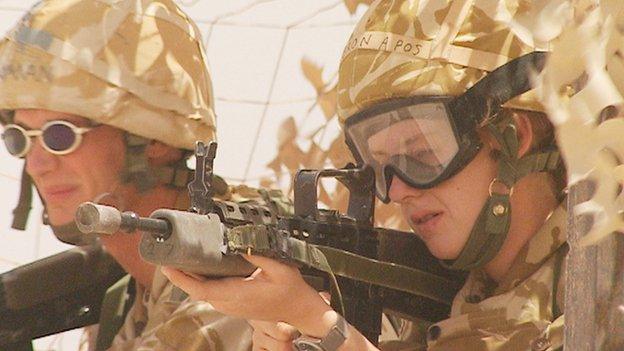
- Published5 May 2014
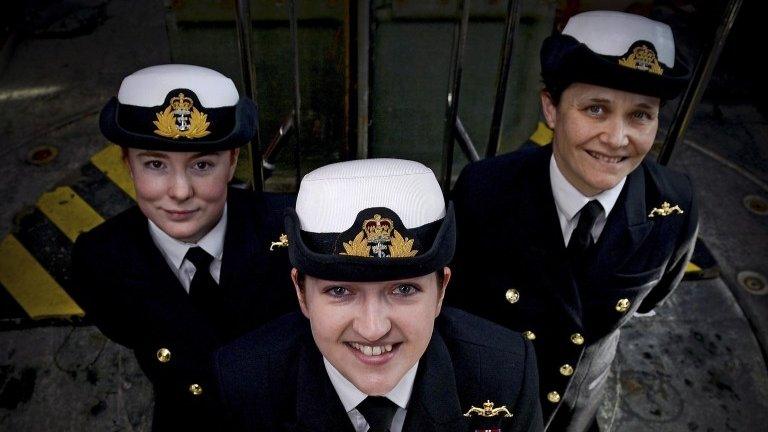
- Published22 May 2012
